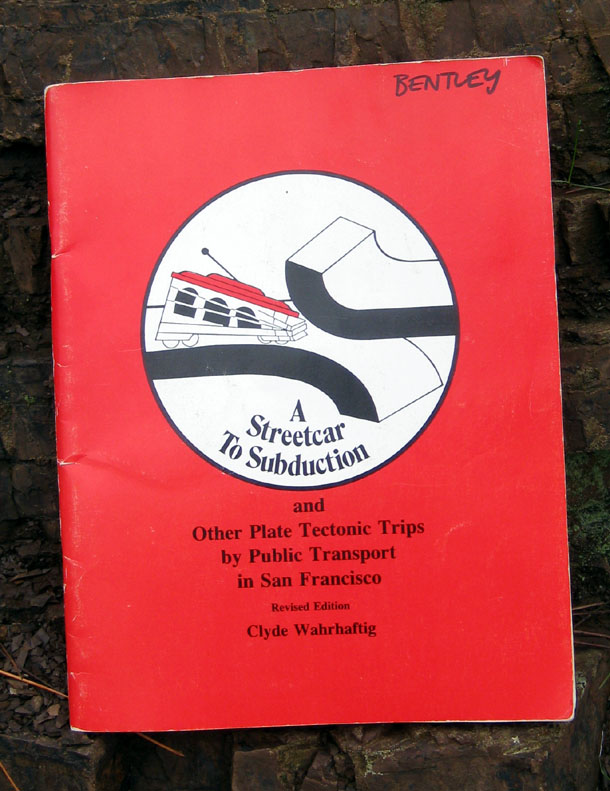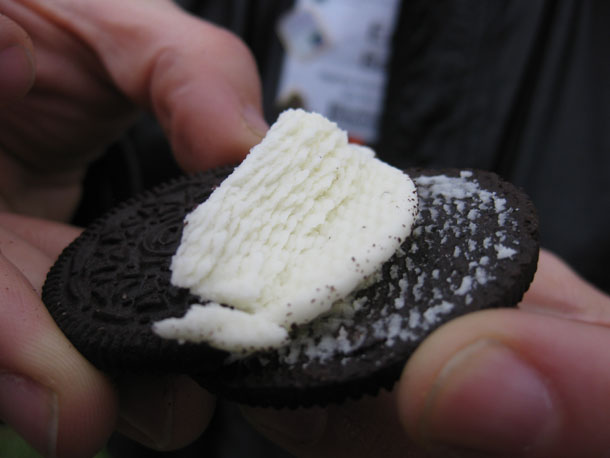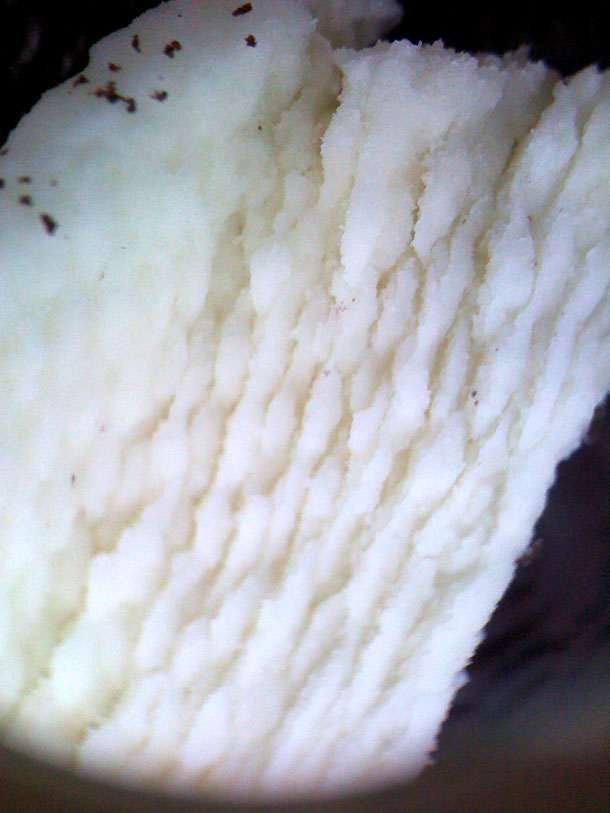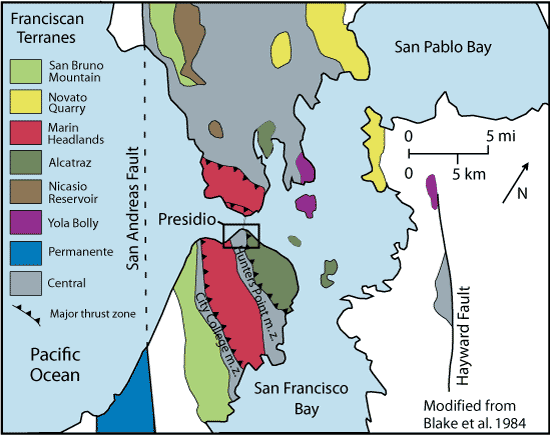19 December 2010
GoSF1: Introduction and overview
Posted by Callan Bentley
“GoSF” = Geology of San Francisco
I’m going to take this week to write up the three field trips I took while at the AGU Fall Meeting, examining the geology of San Francisco and neighboring areas. The three trips were: (1) a birthday hike in the Marin Headlands with Lily, (2) a field trip for geoscience faculty from two-year colleges run by Katryn Wiese of San Francisco City College, and (3) a bike ride to the west side of the San Francisco Peninsula with my former student Alan.

The rock types seen at these different locations overlap quite nicely and present an overview of the geology of this amazing city. After today’s introduction, my plan is to cover:
Kirby Cove, Marin Headlands
(wildlife interlude)
Graywacke turbidites
Serpentinite and mélange
Fractures and the chemistry along them
Pleistocene dunes
The San Andreas Fault and Mussel Rock
Okay, so let’s start with the basics and the big picture. Overall, San Francisco’s bedrock is a series of three terranes with interleaved zones of sheared-out rock called mélange. The five rock units strike in a northwesterly direction across the city and neighboring Marin Headlands, as shown in this bedrock map from the National Park Service:
Going east to west across San Francisco, you will encounter the Alacatraz terrane, the Hunters Point mélange zone, the Marin Headlands terrane, the City College mélange zone*, and the San Bruno Mountain terrane. The mélange zones are the sheared-up, pulverized, and thoroughly-mixed “suture” zones between the different terranes. The terranes themselves are reasonably coherent blocks of crust of common affinity and presumably common origin. To help me around this new terrain, I employed a classic publication, Clyde Wahrhaftig’s A Streetcar to Subduction (1984, published by AGU):

In it, Wahrhaftig shows how public transportation is sufficient to take visitors around the city and neighboring areas and get a taste of the exquisite geology here. If you can’t score a copy of Streetcar on Amazon used, then another nice overall review of the geology of San Francisco can be found here (NPS). In short, the rocks underneath San Francisco (collectively, “the Franciscan complex”) are a bunch of oceanic rocks (igneous and sedimentary) which were scraped off during the Mesozoic as a plate of mainly oceanic crust (the Farallon Plate) subducted to the east under the western edge of the North American Plate. To demonstrate this idea, at the start of Katryn Wiese’s field trip on Sunday, she brought out the Oreo cookies, and we all practiced subducting one cookie half (the one with the white “cream” on it) under another cookie half (the one without the white cream). The result? The white cream scraped off, internally faulted, and built up into a thick “wedge”:

This is analogous to the accretionary wedge which includes the mixed-up rocks of the California Coast Ranges, including San Francisco. Because I can, I took an iPhone + hand lens photo of the Oreo cream accretionary wedge:

Look at all those little thrust fault scarps! Awesome. …And edible!
So we end up with a series of rocks slathered up against one another, with the sedimentary rocks of the Alcatraz terrane being added first, then the rocks of the seafloor Marin Headlands terrane, an “obducted” chunk of of the Farallon Plate itself. A zone of mélange formed as the two blocks scraped past one another, pulverizing the rock along the contact. Later, another terrane hove into view as the Farallon Plate continued to subduct. This block, the future San Bruno Mountain terrane, was composed dominantly of sedimentary rocks. It got shoved under the Marin Headlands seafloor chunk, and again the zone between them was mashed and mushed and mixed up into a tectonic mélange. In this excellent block diagram (from here: poster PDF), you can get a sense of the stuff we’ll be seeing featured on Mountain Beltway over the next two weeks or so:

* I’m very envious of City College that they have a geologic unit named after them. Someone needs to rename Accotink Schist as the “NOVA Annandale schist” just to level the playing field here…



 Callan Bentley is Associate Professor of Geology at Piedmont Virginia Community College in Charlottesville, Virginia. He is a Fellow of the Geological Society of America. For his work on this blog, the National Association of Geoscience Teachers recognized him with the James Shea Award. He has also won the Outstanding Faculty Award from the State Council on Higher Education in Virginia, and the Biggs Award for Excellence in Geoscience Teaching from the Geoscience Education Division of the Geological Society of America. In previous years, Callan served as a contributing editor at EARTH magazine, President of the Geological Society of Washington and President the Geo2YC division of NAGT.
Callan Bentley is Associate Professor of Geology at Piedmont Virginia Community College in Charlottesville, Virginia. He is a Fellow of the Geological Society of America. For his work on this blog, the National Association of Geoscience Teachers recognized him with the James Shea Award. He has also won the Outstanding Faculty Award from the State Council on Higher Education in Virginia, and the Biggs Award for Excellence in Geoscience Teaching from the Geoscience Education Division of the Geological Society of America. In previous years, Callan served as a contributing editor at EARTH magazine, President of the Geological Society of Washington and President the Geo2YC division of NAGT.
[…] This post was mentioned on Twitter by mactavish. mactavish said: RT @geographile: I'll be in my bunk – RT @callanbentley: First in a multi-part series on the geology of San Francisco: http://bit.ly/fJCplc […]
[…] Introduction and overview […]
Nice article. I realize this is 11 years old, but it was just posted in the California Geology FB group. I love the idea of the Oreo model. And your close up of the various faults. 🙂